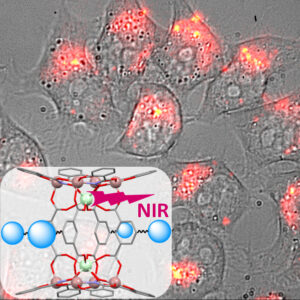Metallacrowns, crown-shaped chemical structures that encapsulate luminous metal ions, could well revolutionise medical imaging.
A lire aussi
6 novembre 2025 - Soutenance de thèse de Josipa Cecic-Vidos
04 November 2025
par Isabelle Frapart
November 6, 2025 - Thesis defense by Josipa Cecic-Vidos
04 November 2025
par Isabelle Frapart
2025, November 5 - Thesis defense by Clémence Couton
03 November 2025
par Isabelle Frapart

